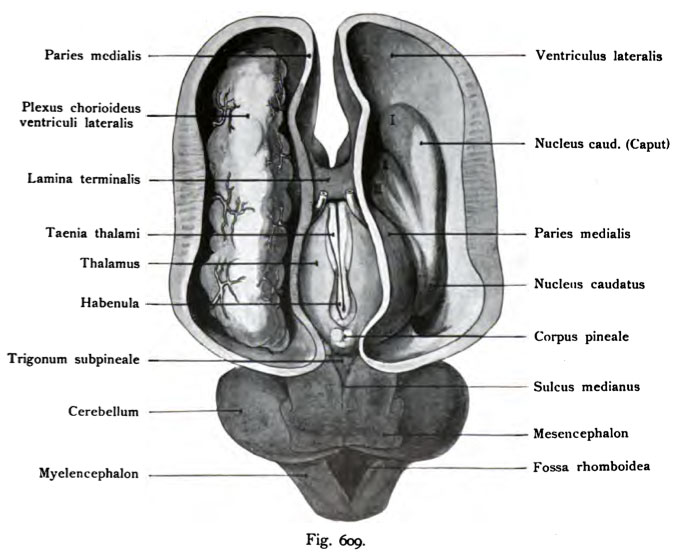File:Kollmann609.jpg
Kollmann609.jpg (679 × 559 pixels, file size: 58 KB, MIME type: image/jpeg)
- This text is a Google translate computer generated translation and may contain many errors.
Images from - Atlas of the Development of Man (Volume 2)
(Handatlas der entwicklungsgeschichte des menschen)
- Kollmann Atlas 2: Gastrointestinal | Respiratory | Urogenital | Cardiovascular | Neural | Integumentary | Smell | Vision | Hearing | Kollmann Atlas 1 | Kollmann Atlas 2 | Julius Kollmann
- Links: Julius Kollman | Atlas Vol.1 | Atlas Vol.2 | Embryology History
| Historic Disclaimer - information about historic embryology pages |
|---|
| Pages where the terms "Historic" (textbooks, papers, people, recommendations) appear on this site, and sections within pages where this disclaimer appears, indicate that the content and scientific understanding are specific to the time of publication. This means that while some scientific descriptions are still accurate, the terminology and interpretation of the developmental mechanisms reflect the understanding at the time of original publication and those of the preceding periods, these terms, interpretations and recommendations may not reflect our current scientific understanding. (More? Embryology History | Historic Embryology Papers) |
Reference
Kollmann JKE. Atlas of the Development of Man (Handatlas der entwicklungsgeschichte des menschen). (1907) Vol.1 and Vol. 2. Jena, Gustav Fischer. (1898).
Cite this page: Hill, M.A. (2024, April 26) Embryology Kollmann609.jpg. Retrieved from https://embryology.med.unsw.edu.au/embryology/index.php/File:Kollmann609.jpg
- © Dr Mark Hill 2024, UNSW Embryology ISBN: 978 0 7334 2609 4 - UNSW CRICOS Provider Code No. 00098G
Fig. 609. Hemisphärium. Menschlicher Fetus vom 3. Monat Scheitel-
steifilänge 45 mm.
(Anatomische Sammlung in Basel)
Die Seitenventrikel sind von oben geöffnet. Links der embryonale Plexus chorioideus lateralis erhalten, der den Seitenventrikel fast vollständig ausfüllt. Durch Schrumpfung ist der Plexus etwas von der Wand abgehoben. Im frischen Zustand liegt er völlig der Wand der Seitenhöhlen an. Einzelne arterielle Ge- fäße verteilen sich auf der Oberfläche des Plexus, die zuführenden Hauptstämme dringen von der medialen Seite ein. Rechts ist der Plexus entfernt. Die mediale Wand der Hemisphärenblase ist vorgewölbt durch den Thalamus, an der lateralen Wand springt das Corpus caudatum vor, mit drei Vorderschenkeln. Zwischen Thalamus und Corpus caudatum klafft eine tiefe Spalte, in welche die mediale Hirnwand eindringt und die Spalte ursprünglich frei durchsetzt. Um das Ende des 2. Monates beginnt die Verwachsung mit den anstoßenden Gebilden. Die Ein- trittsstelle zwischen Thalamus und Corpus striatum ist später als Stria terminalis bemerkbar. Der freiliegende Teil des Thalamus zeigt die Taenia thalami teilweise bedeckt von der Taenia chorioidea ; dorsal befindet sich die Anlage des Corpus pineale, welches doppelt erscheint, dahinter die Fossa commissurae pinealis, weiter dorsal das Trigonum subpineale und dessen Fortsetzung als Sulcus medianus auf dem Dach des Mesencephalon der Vierhügelplatte.
File history
Click on a date/time to view the file as it appeared at that time.
| Date/Time | Thumbnail | Dimensions | User | Comment | |
|---|---|---|---|---|---|
| current | 16:58, 17 October 2011 |  | 679 × 559 (58 KB) | S8600021 (talk | contribs) | {{Kollmann1907}} Category:Human Category:Neural Fig. 609. Hemisphärium. Menschlicher Fetus vom 3. Monat Scheitel- steifilänge 45 mm. (Anatomische Sammlung in Basel) Die Seitenventrikel sind von oben geöffnet. Links der embryonale Ple |
You cannot overwrite this file.
File usage
The following page uses this file:

